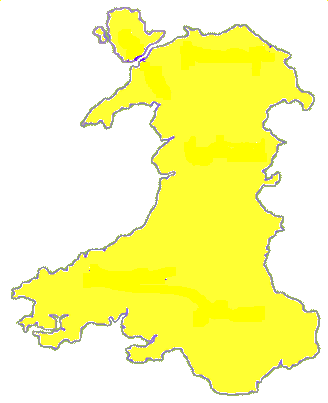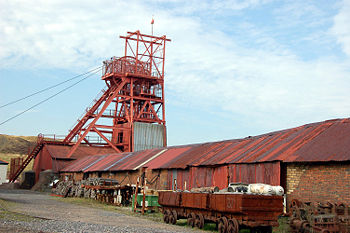
The Industrial Heritage of

The National
"Big Pit" Mining Museum of Wales is in Blaenavon in South
Wales and dedicated to the Welsh heritage of coal mining.
The mine reopened for visitors in 1983. Big Pit
is adjacent to the preserved Pontypool and Blaenavon Railway.
History of
Welsh Coal Mining
Welsh coal had been known
since Roman times and small iron works had long dotted the landscape but the
new demands of
The two south eastern
counties of Glamorgan and Monmouthshire contained
abundant seams of coal and iron ore in their valleys. The market for coal was
originally dominated by the demands of the iron trade but new collieries were
opened as new markets developed and by the 1830's more
coal than iron was being carried by canal barge down to the ports of
In 1870 coal production
exceeded thirteen million tons and about half of this, now carried by the
railway system, was destined for the export trade.
Immigrant workers flocked to
the mining areas in search of work. They came from
The miners and their families
faced a grim existence. Thousands of miners died as a result of roof falls and
underground explosions. Fathers often perished alongside their sons. The nation
gradually became aware of the horrible conditions endured by the mineworkers
and in 1842 the employment of women and young children in mines was forbidden.
Government commissioners had found that children as young as six years of age
could be found working twelve hour shifts underground. Younger children were
used to control ventilating systems while older children and women hauled the
coal from the face to the bottom of the mine shaft. The owners took little heed
of the law, however, and a female worker was killed underground as late as
1866.
Above ground, overcrowding
and insanitary conditions led to outbreaks of
cholera. In 1849 there was an outbreak in Merthyr, Dowlais and Aberdare which
claimed more than 800 lives. Even as late as 1922, Aberdare had the highest infant mortality rate in
In 1873 the Coal Owners Association
was founded. A sliding pay scale was soon devised - if world prices for coal
fell, miner's wages were lowered to protect profits. This led to tremendous
hardship and unrest. The inter-war years saw a serious decline in the coal
industry. Half of the pits closed in the 1930's and the years following the
second world war saw a further gradual decline.
There follow short notes on
locations once known around the world for the part they played in the world's
first industrial revolution. Here in
The Price for Coal
Aberfan. The Merthyr
Vale colliery began to produce coal in 1875. Spoil from the mine workings was
piled close to the village which had grown nearby. Tipping went on until the
1960's. The industry was by now nationalised but even
the National Coal Board failed to appreciate the true nature of the monster
they helped to create. In October of 1966 heavy rain made the giant tip
unstable. The recent dumping of small particles of coal and ash known as tailings
seems to have been partly responsible. A thirty foot high black wave tore
across the Glamorgan canal and swept away houses on
its path towards the village school. One hundred and fourteen children and
twenty eight adults were killed.
The
Risca in Monmouthshire lay 900
feet above a seam of high grade coal known as the Black Vein. This coal was
responsible for the many explosions and 142 men and boys were killed by one of
these in 1860. The New Risca Colliery was opened in
1878 and thought to be safer but in 1880 an explosion caused another 120
deaths.
Senghenydd. Experienced one of the worst
coal mining disasters in 1913 when over 400 men lost their lives. The incident
led to a government inspired inquiry.

For more info on Theosophy
Try these
Dave’s Streetwise Theosophy Boards
This
is for everybody not just people in Wales
Cardiff Lodge’s Instant Guide to Theosophy
One Liners & Quick Explanations
The Most Basic Theosophy Website
in the Universe
If you run a
Theosophy Group you can use
this as an
introductory handout
The Spiritual Home of Urban Theosophy
The Earth Base for Evolutionary Theosophy
Try these if you are
looking for a
local
Theosophy
Group or Centre
UK Listing of Theosophical
Groups
Worldwide Directory of
Theosophical Links